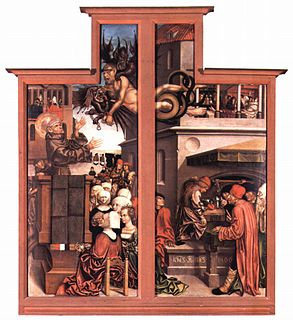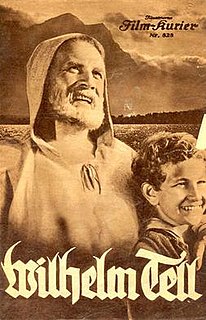Heinrich Bichler (also Hans Bichler, Heinrich Büchler or Hans Büchler; 1466–1497) was a Swiss painter.

Switzerland, officially the Swiss Confederation, is a country situated in western, central and southern Europe. It consists of 26 cantons, and the city of Bern is the seat of the federal authorities. The sovereign state is a federal republic bordered by Italy to the south, France to the west, Germany to the north, and Austria and Liechtenstein to the east. Switzerland is a landlocked country geographically divided between the Alps, the Swiss Plateau and the Jura, spanning a total area of 41,285 km2 (15,940 sq mi). While the Alps occupy the greater part of the territory, the Swiss population of approximately 8.5 million people is concentrated mostly on the plateau, where the largest cities are to be found: among them are the two global cities and economic centres Zürich and Geneva.

Painting is the practice of applying paint, pigment, color or other medium to a solid surface. The medium is commonly applied to the base with a brush, but other implements, such as knives, sponges, and airbrushes, can be used. The final work is also called a painting.
Bichler was born in Bern, and later went on to be the instructor for the painter Hans Fries. In 1472 Bichler painted a portrait of Sulpitius the Pious for the Schloss Thorberg. He also completed a coat of arms for two gates leading to the city of Fribourg in 1478, and a scene portraying the Battle of Morat in 1480.

Bern or Berne is the de facto capital of Switzerland, referred to by the Swiss as their Bundesstadt, or "federal city". With a population of 142,493, Bern is the fifth-most populous city in Switzerland. The Bern agglomeration, which includes 36 municipalities, had a population of 406,900 in 2014. The metropolitan area had a population of 660,000 in 2000. Bern is also the capital of the canton of Bern, the second-most populous of Switzerland's cantons.

Sulpitiusthe Pious or "the Débonnaire" was a 7th-century bishop of Bourges and saint.

A coat of arms is a heraldic visual design on an escutcheon, surcoat, or tabard. The coat of arms on an escutcheon forms the central element of the full heraldic achievement which in its whole consists of shield, supporters, crest, and motto. A coat of arms is traditionally unique to an individual person, family, state, organization or corporation.










